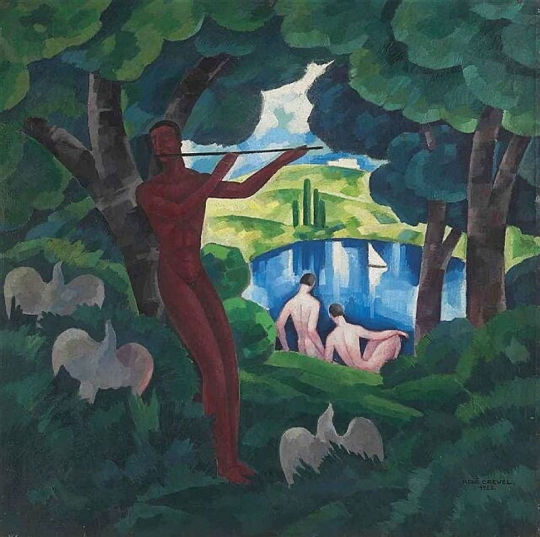#René Crevel
Text

Death is something like Cousin Cynthia, Max Ernst, 1931
Photogram illustration from René Crevel's Mr. Knife, Miss Fork
"Dark Visions of Death and Desire"
#art#illustration#max ernst#1930s#surrealism#photogram#vintage#books#death is something like cousin cynthia#rené crevel#man ray#death and dying#death and desire
50 notes
·
View notes
Text
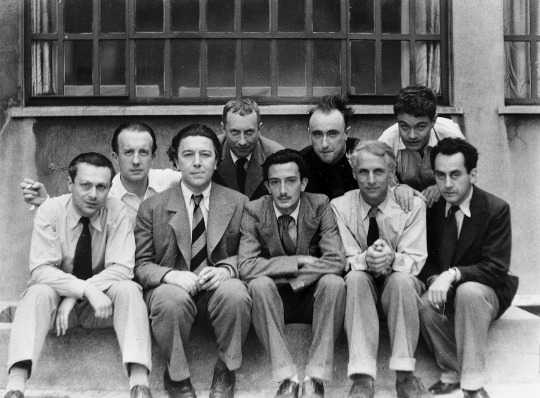
Salvador Dalí, May 11, 1904 – January 23, 1989.
Paris, 1930. From left to right: Tristan Tzara, Paul Éluard, André Breton, Hans Arp, Dalí, Yves Tanguy, Max Ernst, René Crevel, and Man Ray.
#salvador dalí#tristan tzara#paul éluard#andré breton#hans arp#yves tanguy#max ernst#rené crevel#man ray#art#surrealism
308 notes
·
View notes
Text
Now we're going to take a trip. Every night we'll have a new room, but always with the twin beds as close as possible to each other, and we'll talk a long time before going to sleep. We'll stay in bed late every morning. We'll eat in dining cars, and so that nobody recognizes us I’ll call you Miss Fork.
You, you'll call me Mr. Knife, and people will think we're a Spanish couple on our honeymoon.
René Crevel, Babylon 1927
3 notes
·
View notes
Text
In Africa, in Asia, everyone knows how the white man treats
people of color. The muzzle of a cannon is the loudspeaker of
imperialist Europe .... In Alabama, rich American farmers treat
Blacks no better than the Hitlerites treat Jews. One of the
Scottsboro Blacks is condemned to die in the electric chair, even though the so-called victim of those young proletarians denied having been subjected to the rape of which they were accused.
And now that white woman too is threatened, because she
refused to play the court's game by lying; she herself is virtually enslaved by a class of exploiters who want to set an example, and thereby to crush, by means of terror, the will to revolt that is brewing in the hearts of several thousand Black slaves.
--René Crevel, Les Pieds dans le plat (The Screw Up, 1933)
2 notes
·
View notes
Text


portraits with skulls (René Crevel; right)
#Salvador Dalí#René Crevel#art#arte#crever#I CANT FIND A HIGHER REANOF THESE IVE BEEN LOOKING FOR AGES
2 notes
·
View notes
Text

CREVEL, René, et Alberto GIACOMETTI
Les Pieds dans le plat
Paris, Éditions du Sagittaire, 1933
EXEMPLAIRE DE TÊTE SUR JAPON, LES SEULS À POSSÉDER L'EAU-FORTE ORIGINALE SIGNÉE D’ALBERTO GIACOMETTI, SA PREMIÈRE GRAVURE.
ENVOI DE RENÉ CREVEL À ANDRÉ DÜRST.
RELIURE MOSAÏQUÉE DE PIERRE-LUCIEN MARTIN
ÉDITION ORIGINALE
In-12 (185 x 117mm)
TIRAGE : un des 15 exemplaires de tête sur japon, celui-ci numéroté 3, premier papier comportant une eau-forte originale de Giacometti
ILLUSTRATION : 1 EAU-FORTE ORIGINALE SIGNÉE D’ALBERTO GIACOMETTI, ELLE EST NUMÉROTÉE 3/15 AU CRAYON PAR GIACOMETTI
ENVOI autographe signé : Cher André Dürst, parce que vous savez voir des figures émouvantes, voici quelques gueules, voici [faux-titre], voici surtout ma plus amicale pensée, René Crevel
PIÈCES JOINTES : 1. Carte postale autographe de René Crevel adressée à José Corti : “Gala avait dû vous dire que je ne puis malheureusement rien faire pour le livre, sauf vous donner le manuscrit ainsi que, si on peut les récupérer, les 300 fr. que Skira me doit, ainsi que ceux que me doit Laporte. Dali joindrait un dessin”, 1 p. in-16, Davos, s.d. (début des années 1930) ;2. Prière d’insérer de l’ouvrage, dont le texte est de Crevel lui-même, 1 p. in-12
RELIURE SIGNÉE DE PIERRE-LUCIEN MARTIN, datée de 1948. Dos long et bandes de maroquin rouge, décor mosaïqué sur le plat supérieur composé de trois pièces de maroquin fauve et d’un jeu de filets dorés horizontaux, titre doré sur le premier plat, tête dorée, couverture et dos conservés, non rogné. Chemise et étui
Le frontispice qui orne les exemplaires de tête, intitulé “Squelette dans une cage et hippocampe”, est la toute première gravure d’Alberto Giacometti. Le photographe André Dürst, à qui René Crevel a destiné cet exemplaire, a notamment réalisé un portrait de Crevel, paru dans le n° 23 de Commune en juillet 1935.

christies.com
17 notes
·
View notes
Text


pavel tchelitchew
8 notes
·
View notes
Text
[Babilonia][René Crevel]
Il racconto del disfacimento di una famiglia benestante, filtrato attraverso gli occhi di una bambina.
Dalla grigia Parigi a una Marsiglia arcobaleno di bandiere, sole e molluschi al mercato; dai vestiti variopinti e rappezzati delle vecchie prostitute della Cannabière alle guance troppo rosa di ragazzi che vendono il piacere a poco, Crevel narra le storie tristi di persone ai margini, con un lirismo doloroso e una rabbia latente. Manifesta il proprio dissenso nei confronti della pena di morte,…

View On WordPress
0 notes
Text
So, I saw this picture of some Surrealist artists and writers in my French literature book
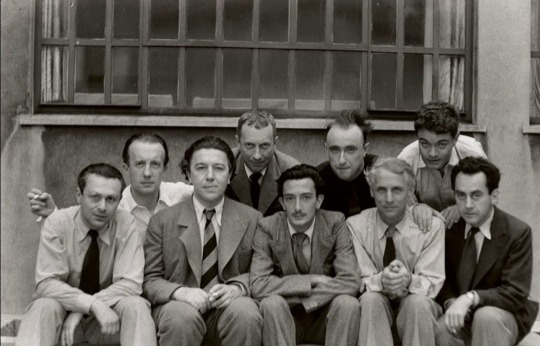
And tell me I'm not the only one who sees the resemblance between the young man in the right corner and Lando
#his name's René Crevel#i saw other pictures and they don't look that alike#but#the vibes are there#tell me i'm not crazy#lando norris
5 notes
·
View notes
Photo

Anna Riwkin Groupe surréaliste, Paris 1933
Front Row, (from Left): Paul Eluard, André Breton, Salvador Dalí, Max Ernst, Man Ray. Rear Row: Jean Arp, Yves Tanquy, René Crevel, Tristan Tzara
526 notes
·
View notes
Text

Vía Groupe Surréaliste Internazionale Daniel Ollivier
Max Ernst ~ Loplop Introduit les membres du groupe surréaliste, 1931
Collage of photographs, pencil and frottage
En partant du haut à gauche, Yves Tanguy, Louis Aragon, Alberto Giacometti, René Crevel, Georges Sadoul (from behind with raised arms); from center left, Luis Buñuel (before helmeted figure), Benjamin Peret, Tristan Tzara, Salvador Dali, Max Ernst, Gala Éluard, André Thirion (below Ernst), Paul Éluard, René Char (arm raised), Maxine Alexandre; below André Breton, Man Ray
5 notes
·
View notes
Text
hating a historical figure is funny rn im blaming salvador dalí for rené crevel’s death. dalí had nothing to do with that. and what would he do anyway? if dalí told me “noooo dont kill yourself” i’d kill myself extra hard
6 notes
·
View notes
Text

A André Breton ce livre dont je sais trop le mal qu’il pourra penser, mais ce mal peu m’importe au fond, s’il croit vraiment à ma vraie amitié
René Crevel
Mon corps et moi, 1926, exemplaire avec envoi à André Breton
A André Breton este libro del que sé demasiado el mal que podrá pensar, pero este mal no me importa en el fondo, si realmente cree en mi verdadera amistad.
2 notes
·
View notes
Text
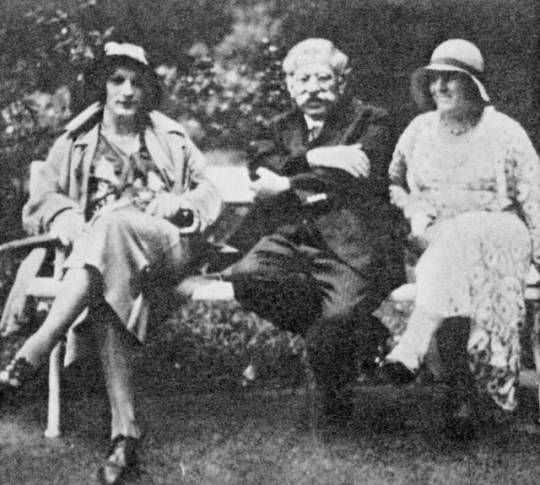
Hirschfeld, (an Ashkenazi Jew from a prominent family in Poland) was educated in philosophy, philology and medicine. An outspoken advocate for sexual minorities, Hirschfeld founded the Scientific-Humanitarian Committee and World League for Sexual Reform. He based his practice in Berlin-Charlottenburg during the Weimar period. Historian Dustin Goltz characterized the committee as having carried out "the first advocacy for homosexual and transgender rights". He is regarded as one of the most influential sexologists of the twentieth century.
Hirschfeld was targeted by Nazis for being Jewish and gay; he was beaten by völkisch activists in 1920, and in 1933 his Institut für Sexualwissenschaft was sacked and had its books burned by Nazis. He was forced into exile in France, where he died in 1935.
The Institute housed Hirschfeld's immense archives and library on sexuality and provided educational services and medical consultations; the clinical staff included psychiatrists Felix Abraham and Arthur Kronfeld, gynecologist Ludwig Levy-Lenz, dermatologist and endocrinologist Bernhard Schapiro, and dermatologist Friedrich Wertheim. The institute also housed the Museum of Sex, an educational resource for the public, which is reported to have been visited by school classes. Hirschfeld himself lived at the Institution on the second floor with his partner, Karl Giese, together with his sister Recha Tobias (1857–1942). Giese and Hirschfeld were a well-known couple in the gay scene in Berlin where Hirschfeld was popularly known as Tante Magnesia. Tante ('aunt') was a German slang expression for a gay man but did not mean, as some claim, that Hirschfeld himself cross-dressed.
People from around Europe and beyond came to the institute to gain a clearer understanding of their sexuality. Christopher Isherwood writes about his and W. H. Auden's visit in his book Christopher and His Kind; they were calling on Francis Turville-Petre, a friend of Isherwood's who was an active member of the Scientific Humanitarian Committee. Other celebrated visitors included German novelist and playwright Gerhart Hauptmann, German artist Christian Schad, French writers René Crevel and André Gide, Russian director Sergei Eisenstein, and American poet Elsa Gidlow.
In addition, a number of noted individuals lived for longer or shorter periods of time in the various rooms available for rent or as free accommodations in the Institute complex. Among the residents were Isherwood and Turville-Petre; literary critic and philosopher Walter Benjamin; actress and dancer Anita Berber; Marxist philosopher Ernst Bloch; Willi Münzenberg, a member of the German Parliament and a press officer for the Communist Party of Germany; Dora Richter, one of the first transgender patients to receive sex reassignment surgery at the institute, and Lili Elbe. Richter had been previously arrested for cross-dressing and discharged from the military. At the suggestion of a close friend, she later came to the institute for help. Hirschfeld had coined the term transvestite in 1910 to describe what today would be called transgender people, and the institution became a haven for transgender people, where Hirschfeld offered them shelter from abuse, performed surgeries, and gave otherwise unemployable transgender people jobs, albeit of a menial type, mostly as "maids".
That is the official account. But left out is that Magnus Hirschfeld was also an advocate of sexualizing children or Pedophilia and was engaged in Social Experimentation and Engineering while in Weimer.
"...to advocate for homosexual and transgender rights], was a reformer who encouraged society to recognize and accept sexual manifestations in infants and realize that sexual experimentation was part of adolescence. Ellis held that it was important to repeal bans on contraception as well as laws prohibiting sexual activity between consenting adults in private. (Bullough, 1996, p. 76)
This sounds reasonable enough, and it was entirely in accord with the value-set I was raised with. Yet, in the context of other less openly-discussed areas of “sexual exploration” which seemed to sprout quite organically from the Fabian tree (such as PIE), it also reads like a recipe for disaster.
If we look at the twentieth century alone, the idea of sexualized children, and a belief in the benefits of adult-child sex, can be found in areas as seemingly diverse as:
Freud's theories, and his insistence that children's accounts of being sexually abused were based in their own fantasy life and secret desires, more than on actual events.
Early psychosexual research in the UK by Havelock Ellis and the Fabian Society (and later via the Tavistock Institute).
Magnus Hirschfeld and the Scientific Humanitarian Committee in Germany, probably the first advocacy for homosexual and transgender rights and later the Institute of Sexual Research.
The Order of Chaeronea (founded by George Cecil Ives)nd the “Uranian” or “third sex” movement.
Early literary works such as Nabokov's Lolita (inspired by Ellis).
Experiments in progressive schooling initiated by Fabians such as Edward Carpenter and Cecil Reddie.
The early Wiccan movement (such as the Order of Woodcraft), which Crowley influenced and was directly involved in (he wrote many of the rituals with Gerald Gardener).
“MKULTRA” mind control experimentation in the US and the UK in the 1950s and beyond. This overlapped with the use of hallucinogens as a means of “liberation,” something Crowley was directly involved in.
Alfred Kinsey's “groundbreaking research,” which entailed the controlled sexual abuse of children and the recruitment of child molesters to do it. (Kinsey was also interested in Crowley.)
The Kinsey-inspired “sexual revolution” and the counterculture which sprung from many or all of these prior (mostly state-funded) “movements.” (The Beatles were influenced by Crowley, as was Leary.)
The Kinderladen of 1960s Germany—leftist schools where children were taught, for “political” reasons (i.e., social liberation), to have sex with adults.
Charles Manson and his “family,” who, like Crowley (having doubtless read him), prohibited the discipline of children and included them in group sex play.
The Paedophile Information Exchange, affiliated with the UK National Council for Civil Liberties; its aim in the 1970s was to reduce or abolish the age of consent so adults and children would be free to “love one another.”
Jimmy Savile, in the 1950s, ’60s, ’70s, ’80s, ’90s, and 2000s, whose long career as a child rapist flourished in tandem with his high-level political associations, his “friendship” with the royal family, and his equally long-term, still-undivulged, “charity” work for the UK National Health Service (including Tavistock). And so on."
The Vice of Kings: How Socialism Occultism and The Sexual Revolution Engineered A Culture of Abuse by Jasun Horsley
And exactly what went on at the institute in Weimer, founded by Hirschfeld?
"Berlin became the center of sexual research in the 1800s and early 1900s, Magnus Hirschfeld the leader of the pack. The population of Berlin exploded, from the 400,000 in the 1800s to 4 million in 1920. Berlin went from a city of open sewers to the first city ever electrified, with, in 1800, electric streetcars and lighting. It went from a city of open sewers to one of public toilets and baths, from the filthiest to the cleanest city in the world, infinitely more hygienic than London, Paris and N.Y. Magnus Hirschfeld (1868–1935) was a sexologist who practiced in Berlin. He founded the Scientific Humanitarian Committee with others in 1897, the purpurpose to promote sexual understanding. His work was inspired by a military officer who committed suicide on the eve of his wedding, preferring death to what would be required on his honeymoon night, an epiphany for Hirschfeld.
Dubbed the Einstein of sex, Hirschfeld opened the Institute for Sexual Research in the liberal Weimar Republic in 1919, that housed a Museum of Sex and had some 50 rooms, one of which was occupied for a time by Christopher Isherwood and visited by W.H. Auden, André Gide and Sergei Eisenstein. There was a museum with sex toys and walls plastered with photos of nudes, presumably there for sexual education, and lots of men dressed as women and women as men, both in photos and live as visitors. Teas were offered at the Institute, reigned over by Hirschfeld and his lover Karl Giese.
Bar hopping at night was included, so that in one way or another one could meet and mate with whomever one wished, back ‘’home’’ at the Institute. For those passing through like Isherwood the occasions to meet boys, the private rooms and stacks of pornography, made the Institute a horny lad’s wet dream..." Isherwood Diaries








In “The Childhood Origins of the Holocaust,” the psycho-historian Lloyd deMause talks about Weimar culture, the flourishing of the arts and sciences in Germany during the Weimar Republic. This period between Germany's defeat in World War I and Hitler's rise to power, deMause writes, may have produced “exuberant creativity and experimentation” but also created “anxiety, fear and a rising sense of doom.” By the end of the 1920s, so many reactionary anti-democratic backlash parties had spontaneously sprung up that Weimar was called “a Republic without republicans.” People began to call for “emancipation from emancipation” and “a restoration of authoritarian rule.” (deMause, 2005)
Hypersexuality, pushing Sex and Gender theories, crossdressing, extreme representations of Transgenderism, encouraging prostitution, pedophila, Occultism, and a growing sense of doom. Sound familiar? It should.
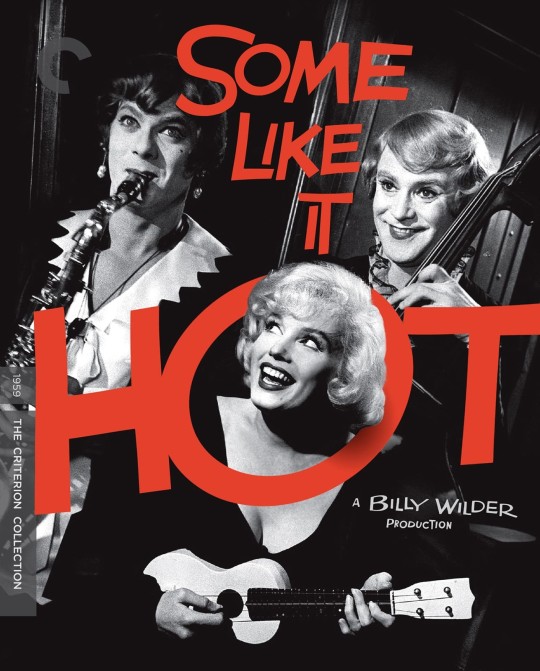
The point? Magnus Hirschfeld was just one of a group of prominent to wealthy men using marginalized people for social experimentation, and the pushing of their own agendas during pre-WWII Germany. 100% sure Sexual Liberation and Gender and Sex debates by political extremists were pushed as hard then, as they are being pushed now, the result of which was/is of course, using it as an excuse to push Conservstism/Fascism. Hirschfeld was also NOT forcibly exiled from Germany. Luckily for him, in the months before and after the Nazis burned the Institution, he was on a worldwide book tour. Hirschfeld exiled himself to a luxury apartment in first Paris, then Nice. But how many 1000s of LGBTQ stuck in Weimer were killed during WWII?
#Wanda#Hidden LGBTQ History#Hidden German History#Hidden British History#Social Engineering#Socialism#Leftist Politics#Jasun Horsley
5 notes
·
View notes
Text



blinkies i made of liz, crevel & ludwig ii
feel free to use
2 notes
·
View notes
